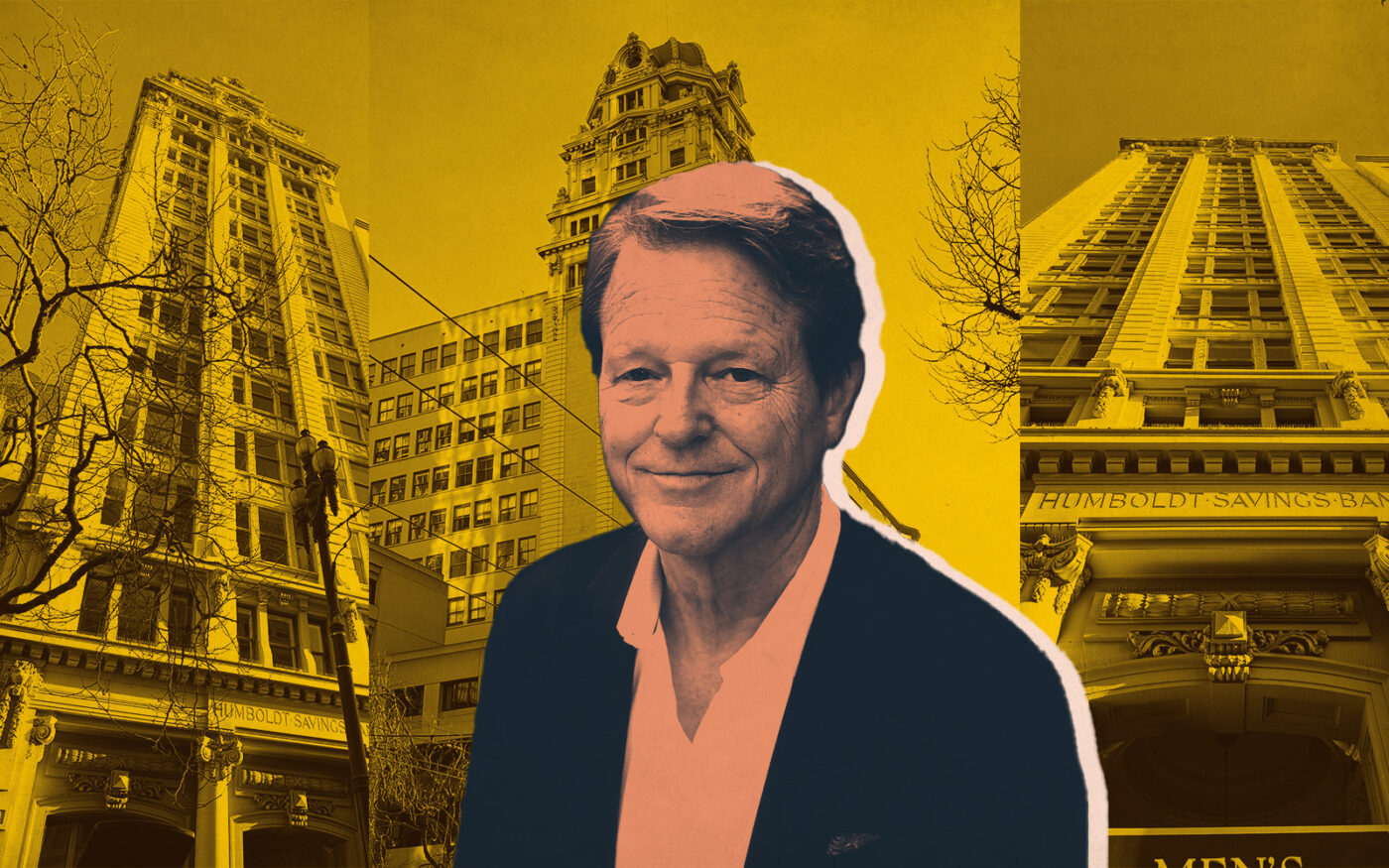Forge Development Partners is betting $70 million on the feasibility of office-to-residential conversions in Downtown San Francisco, and the company’s founder and CEO Richard Hannum said he knows other developers are watching to see if that bet pays off.
“If we’re successful, that will show others how to do it,” he said, adding that the city and its Department of Building Inspection would get an education right along with them. “We’ll all learn together how to make this a better process.”
Hannum would not reveal how much of his $70 million budget will go towards the purchase of 785 Market Street, as the sale has not yet closed, and how much is earmarked for the extensive renovation that will turn the historic former Humboldt Bank building from a “very lightly occupied” 19-story office building, with a Men’s Wearhouse on the ground floor, into 120 apartments.
He also declined to detail how Forge plans to finance the project, other than to say that most financial groups are “very, very conservative” when it comes to relatively untested models like conversions. The company plans to utilize both C-PACE financing and Mills Act property tax savings on the “zero net carbon, zero net energy” project at the 1908 building.
“We’ve been fortunate to find some sponsors that agree with what we’re doing,” Hannum said.
The speed of the planned conversion helps to make it pencil. To build a 19-story building out of the ground would take at least two years, Hannum said, and when it was done it wouldn’t come out with the character and architectural details of this 116-year-old “wedding cake” tower. Instead, construction is expected to start late this year with the original facade maintained, including the Baroque-style dome, and the first occupants should move into the mix of studio, one- and two-bedroom apartments by early 2025.
“Development is a math model,” he said. “The earlier you can get to revenue, the better the results.”
Gensler is the architect on the project, as well as co-author of a study on office-to-resi conversions that looked at more than 1,000 office buildings across North America, including 30 in San Francisco. Gensler Principal Doug Zucker said via email that the Humboldt Building scored a high rating for ease of conversion in that study, due to its location near public transportation, shape and floor plate size.
“From a design perspective, there are few hurdles with converting it to desirable apartments with large windows and historic charm that would be coveted by renters,” he said in his email.
Forging a path
“Grande dames” like 785 Market exist all over the city, Hannum said, and Forge is “aggressively involved in multiple opportunities” on other possible conversions.
He said he supports Mayor London Breed’s Measure C, which would eliminate the transfer tax on office-to-resi units if it passes next month, but said the city should go further and eliminate the transfer tax when the building is sold to a developer with conversion plans as well. He said he has a close working relationship with the city as Forge and Gensler try to forge a path that others may soon follow.
“What we’re doing with the city is helping to identify opportunity and where we can find commonality in the need to get this accomplished,” he said. “And if we can, we have the ability to deliver housing within 12 months.”
For example, allowing a historic building’s utilities systems to be saved rather than replacing them to bring them up to the current residential code would save developers a lot of time and money. By working with PG&E to put in a single meter instead of individual meters on Forge’s newly built “micro-home” project with Bridge Housing at 361 Turk Street in the Tenderloin, the developers saved $50,000 per unit, Hannum said.
Zucker added that the city has “been very supportive in trying to find ways to help with building and fire code issues.”
Using the existing elements in a building also helps developers hit their environmental, social and governance goals, Hannum said.
“It speaks to reuse, stops waste, and makes this more efficient and affordable in the process,” he said, adding that the flexibility would be especially important when looking to convert older buildings like 785 Market. “It meets the code until you make the transition and then somehow we force these buildings to become something they’re not at great expense. How can we mitigate that through the process? That’s something we’re actively working on.”
“Complex parts”
San Francisco-based architect and structural engineer Charles Bloszies said via email that the project would be followed “closely” by designers like himself who are very interested in conversions, and who are “rooting for it” to hopefully be a “catalyst” for more.
“It has all the complex parts: large scale, historic building, mid-block site,” he said. “Architects will be especially interested in how these factors are put into balance.”
Zucker agreed that 785 Market could have the potential to unlock “a solution to how we reactivate our downtown,” and “show the way for other historic buildings to convert from office to the much-needed housing.”
Hannum sees symbolism in this particular project kicking off what could be a new beginning for a depressed downtown, as it was one of the first to be erected after the destruction wrought by the 1906 earthquake.
“It was an iconic building when it was built and it remains that way today,” he said. “It was one of the first buildings delivered after the earthquake and fire in the revitalization of downtown and now it’s going to get to do it again.”
Read more



